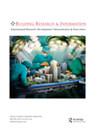实现建筑环境的循环过渡:系统和跨学科的模式、方法和视角
IF 3.7
3区 工程技术
Q1 CONSTRUCTION & BUILDING TECHNOLOGY
引用次数: 1
摘要
向可持续生产和消费模式过渡的紧迫性是我们时代最紧迫的挑战之一。在提出的各种模式中,向循环经济的过渡提供了可行的解决方案,从物质和系统角度推动发展和改进可持续性框架。简言之,循环经济被定义为一种工业系统,旨在通过提高资源效率和设计系统外废物,使经济增长与有限资源的消耗逐步脱钩(Ellen MacArthur Foundation)。自工业革命以来,建筑环境一直被线性经济模式(采取-制造-处置)所主导,是世界上最大的资源消耗国之一,也是废物的主要生产国,也是二氧化碳排放量增加的罪魁祸首。各种行业报告已经指出,通过采用循环经济方法,企业、政府和城市都有充足的机会。这些机会同样适用于资源密集型和高废物行业,如建筑环境。建筑环境包括人类建造的建筑、建筑资产和设施,这些都被视为我们生活和工作的环境。它是一个高度复杂的社会、生态和技术系统,可以在不同的规模和水平上定义——建筑、建筑存量、街区、城市和地区——每个都有不同的时间常数、参与者和制度(McGrath&Lei,2021)。建筑环境也被定义为文化和自然重叠区的人工制品,因果关系发生在两个方向上(Hassler&Kohler,2014)。这就引出了几个问题,比如:循环经济对建筑环境到底意味着什么?我们如何推动和实现它向一个通过设计再生的系统的转变?一个同样重要的问题是,我们如何将其与更广泛的自然和社会系统重新联系起来,而这些系统对维持它至关重要?尽管近年来该领域的意识越来越强,但对于如何开发、融资、采购、设计、建造、运营、维护和重新调整服务和资产的用途,目前还没有明确的公式来实现预期的过渡。目前可用的文献主要关注与建筑环境的循环过渡相关的“为什么”和“什么”问题,而“如何”问题却很少受到关注。设计新的可生物降解材料,或可以拆卸并易于再制造成新产品的新建筑系统,都不会在所需的水平上实现成功的过渡。这是因为我们目前没有关键参与者的支持,也缺乏关闭材料循环的供应链和商业模式。在这方面,循环建筑环境不会通过以收集重复使用、回收材料或重新制造的建筑构件为目标的点式解决方案来实现。从本质上讲,循环性是一个系统的特性,也是一个系统如何以最小的浪费和最大的价值收益来处理其材料和产品流。不管我们是在物质层面,还是在建筑或邻里层面;我们只能通过系统保持其流量处于闭环的能力来获得循环值。因此,我们还需要设计一个系统,使所有供应链参与者的利益保持一致,并进行各级公共、私人和社会干预。因此,循环转换应该由系统思维提供信息,这需要理解不同部分如何相互作用以塑造整个系统的行为的能力。系统性变革需要所有相关的系统参与者参与,需要对工业生态系统进行根本性变革本文章由计算机程序翻译,如有差异,请以英文原文为准。
Towards a circular transition of the built environment: systemic and transdisciplinary models, methods and perspectives
The urgency of a transition to sustainable models of production and consumption is one of the most pressing challenges of our times. Among various models proposed, a transition to a circular economy offers workable solutions to catalyse developing and improving sustainability frameworks from material and system perspectives. In a nutshell, circular economy is defined as an industrial system which aims to gradually decouple economic growth from the consumption of finite resources through enhancing resource efficiency and designing waste out of systems (Ellen MacArthur Foundation). Having been dominated by a linear economic model (take-make-dispose) since the industrial revolution, the built environment is one of the world’s largest consumer of resources, a major producer of waste and a major culprit behind increasing CO2 emissions. Various industry reports already point out to the ample opportunities for businesses, governments, and cities through the adoption of circular economy approaches. These opportunities are similarly portable to a resource-intensive and high waste sector like the built environment. The built environment constitutes human-made buildings, built assets, and facilities viewed collectively as an environment in which we live and work. It is a highly complex social, ecological, and technical system that can be defined in various scales and levels – buildings, building stocks, neighbourhoods, cities, and regions – each with different time constants, actors and institutional regimes (McGrath & Lei, 2021). The built environment is also defined as an artefact in the overlapping zone between culture and nature, with causation occurring in both directions (Hassler & Kohler, 2014). This begs several questions, such as: what exactly circular economy can mean and imply for the built environment? How can we drive and implement its transition into a system which is regenerative by design? And an equally important question is how can we reconnect it to the broader natural and social systems that are fundamental to maintain it? Although the field has observed a growing awareness in recent years, there is no explicit formula as to how to develop, finance, procure, design, construct, operate, maintain, and repurpose services and assets to enable the desired transition. The now available literature has been concerned mostly with the ‘why’ and ‘what’ questions related to a circular transition for the built environment, whereas, the ‘how’ questions have received scant attention. Designing new biodegradable materials, or new building systems that can be dismantled and easily remanufactured into new products will not create a successful transition at the required level. That is because we currently do not have buy-in from key players and lack the supply chains and business models in place to close the material loops. In this regard, a circular built environment will not materialize through point solutions that target the collection of reused, recycled materials or re-manufactured building components. In essence, circularity is the property of a system and how a system handles its materials and product flows with minimum waste and with maximum value gains. Regardless of whether we are dealing at material scale, or a building or a neighbourhood scale; we can only gain circular value through the system’s ability to keep its flows in a closed loop. Therefore, we also need to design a system with aligned interests of all supply chain actors and with various levels of public, private, and social interventions. A circular transition, therefore, should be informed by System Thinking, which requires the ability to understand how different parts interact to shape the behaviour of the system as a whole. A systemic change requires all relevant system actors on board, fundamental changes in industrial ecosystems
求助全文
通过发布文献求助,成功后即可免费获取论文全文。
去求助
来源期刊

Building Research and Information
工程技术-结构与建筑技术
CiteScore
8.60
自引率
7.70%
发文量
43
审稿时长
>12 weeks
期刊介绍:
BUILDING RESEARCH & INFORMATION (BRI) is a leading international refereed journal focussed on buildings and their supporting systems. Unique to BRI is a focus on a holistic, transdisciplinary approach to buildings and the complexity of issues involving the built environment with other systems over the course of their life: planning, briefing, design, construction, occupation and use, property exchange and evaluation, maintenance, alteration and end of life. Published articles provide conceptual and evidence-based approaches which reflect the complexity and linkages between cultural, environmental, economic, social, organisational, quality of life, health, well-being, design and engineering of the built environment.
 求助内容:
求助内容: 应助结果提醒方式:
应助结果提醒方式:


